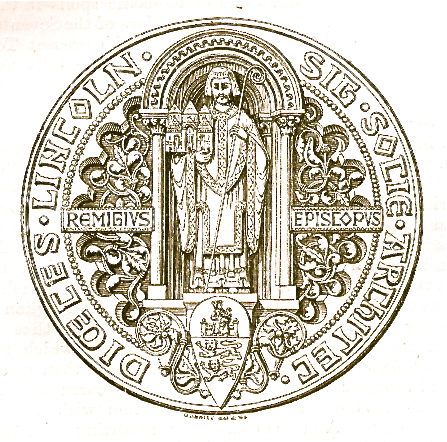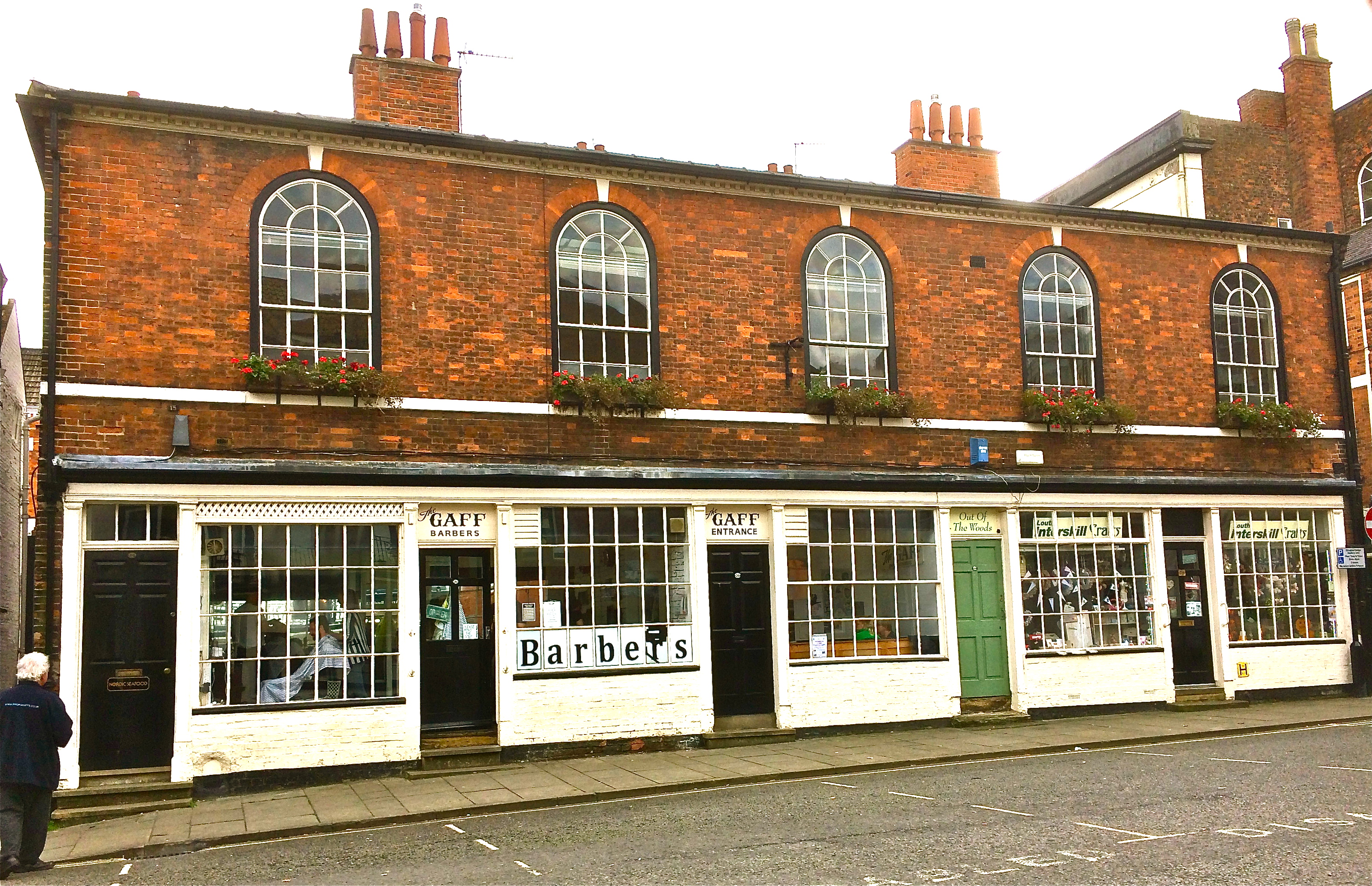Society for Lincolnshire History and Archaeology on:
[Wikipedia]
[Google]
[Amazon]
The Society for Lincolnshire History and Archaeology or SLHA aims to create a greater awareness of the history of Lincolnshire, and works to discover and record its heritage. In its present form, the society came into being in 1974, but it has antecedents dating back to 1844.
 The Lincolnshire Topographical Society was established in 1840 under the patronage of Lord Monson. Among its members were the architects
The Lincolnshire Topographical Society was established in 1840 under the patronage of Lord Monson. Among its members were the architects  In 1844 the Lincolnshire Society for the encouragement of Ecclesiastical Antiquities was founded in Louth. The first meeting was held in the Albion Rooms in the Cornmarket on 21 November 1844. Meetings were held monthly and membership was by election. Initially this was limited to members of the
In 1844 the Lincolnshire Society for the encouragement of Ecclesiastical Antiquities was founded in Louth. The first meeting was held in the Albion Rooms in the Cornmarket on 21 November 1844. Meetings were held monthly and membership was by election. Initially this was limited to members of the
Activities and branches
The society's activities include arranging lectures and other events about Lincolnshire's history and archaeology, and the publication of a journal, a newsletter and books about Lincolnshire. The society has its headquarters at the Jews' Court in Lincoln, where it has a lecture room, and runs a bookshop for new and secondhand books. It has two branch groups, the Sleaford History Group and the South Holland History Group at Spalding, and also works with other local groups throughout the historic county of Lincolnshire.Earlier societies
 The Lincolnshire Topographical Society was established in 1840 under the patronage of Lord Monson. Among its members were the architects
The Lincolnshire Topographical Society was established in 1840 under the patronage of Lord Monson. Among its members were the architects Edward James Willson
Edward James Willson (1787–1854) was an English architect, antiquary, architectural writer, and mayor of Lincoln in 1851–2.
Life
Born in Lincoln on 21 June 1787, he was the eldest son of William Willson (1745-1827) of Lincoln by his wife ...
and William Adams Nicholson
William Adams Nicholson (1803–1853) was an English architect who worked in Lincoln and was a founding member of the Royal Institute of British Architects.
Life
Born on 8 August 1803 at Southwell, Nottinghamshire, he was the son of James Nich ...
. It only published one volume of proceedings and appears to have been defunct by 1843.
 In 1844 the Lincolnshire Society for the encouragement of Ecclesiastical Antiquities was founded in Louth. The first meeting was held in the Albion Rooms in the Cornmarket on 21 November 1844. Meetings were held monthly and membership was by election. Initially this was limited to members of the
In 1844 the Lincolnshire Society for the encouragement of Ecclesiastical Antiquities was founded in Louth. The first meeting was held in the Albion Rooms in the Cornmarket on 21 November 1844. Meetings were held monthly and membership was by election. Initially this was limited to members of the Anglican
Anglicanism is a Western Christian tradition that has developed from the practices, liturgy, and identity of the Church of England following the English Reformation, in the context of the Protestant Reformation in Europe. It is one of t ...
church. This is probably the reason why Edward James Willson, a Roman Catholic, did not join this society. In 1849 the society changed its name to the Lincolnshire Architectural Society and then in 1853 to the Lincolnshire Diocesan Architectural Society. ''White's Directory for Lincolnshire'' noted in 1856 that the "Lincolnshire Diocesan Architectural Society has an interesting collection of curiosities, drawings etc. in the Louth Corn Exchange pposite the Albion Rooms but that it was proposed to move it to Lincoln". Archdeacon Edward Trollope
Edward Trollope (15 April 1817 – 10 December 1893) was an antiquary and an Anglican Bishop of Nottingham in the Victorian era.
Family background
Trollope was born at Uffington, near Stamford in Lincolnshire, on 15 April 1817, the sixth son o ...
was appointed as secretary of the society in 1850 and it was probably on his initiative that the society moved to Lincoln and started to publish its proceedings in the ''Reports and Papers'' of the Associated Archaeological Societies. A further name change occurred in 1885 when it became the Lincolnshire and Nottinghamshire Architectural and Archaeological Society. This was to reflect the removal of the Archdeaconry of Nottingham from the Diocese of Lincoln
The Diocese of Lincoln forms part of the Province of Canterbury in England. The present diocese covers the ceremonial county of Lincolnshire.
History
The diocese traces its roots in an unbroken line to the Pre-Reformation Diocese of Leic ...
and the creation of the new Diocese of Southwell
The Diocese of Southwell and Nottingham is a Church of England diocese in the Province of York, headed by the Bishop of Southwell and Nottingham. It covers all the English county of Nottinghamshire and a few parishes in South Yorkshire. It i ...
. In 1902 Nottinghamshire was dropped from the title. During these early years a high proportion of the members of the society were clergymen within the Diocese of Lincoln and most of the published articles are about Church history and architecture.
While the Lincolnshire Architectural and Archaeological Society continued to publish its papers with the Associated Archaeological Societies until 1936, other developments were taking place. In 1930 the Lindsey Local History Society was founded and it came to publish the ''Lincolnshire Historian''. In 1945 the Lincoln Archaeological Research Committee was founded and this started to conduct a series of notable excavation both in the City of Lincoln and in the county. The Lincolnshire Architectural and Archaeological Society merged with the Lindsey Local History Society in 1965 and in 1974 the society for Lincolnshire History and Archaeology was created by a further mergers with the Lincoln Archaeological Research Committee.Sturman 1994, p. 256. and the Lincolnshire Industrial Archaeology Group. In 2009 Flare, an organisation that supported the Lincoln Archaeological Trust became a constituent member of the society.
''Lincolnshire History & Archaeology''
The society publishes a journal entitled ''Lincolnshire History & Archaeology''. The first volume was published 1966. In the course of the years delays have arisen, so that the 51st volume (2016) was published in 2019. The contents of all journals can be found on the website of the SLHA. Many articles are digitally available here.See also
*Lincoln Record Society
Lincoln Record Society is a British text publication society founded in 1910 which edits and publishes historic records relating to Lincolnshire and the Diocese of Lincoln. The ancient diocese covered not only Lincolnshire, but also Leiceste ...
* List of Antiquarian Societies
References
Bibliography
*External links
* {{Authority control Organisations based in Lincolnshire History of Lincolnshire Non-profit organisations based in the United Kingdom Organizations established in 1844 Historical societies of the United Kingdom Archaeological organizations